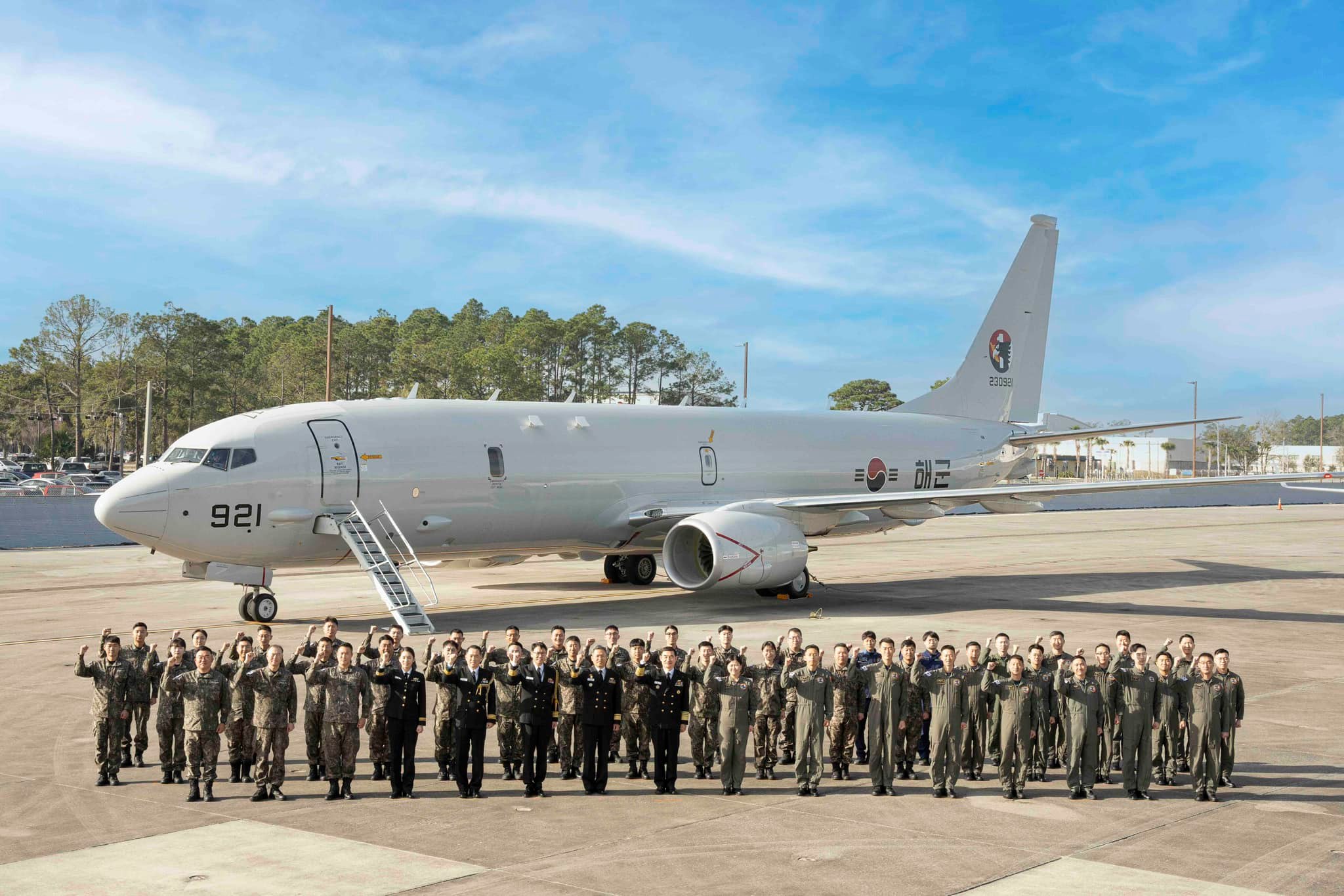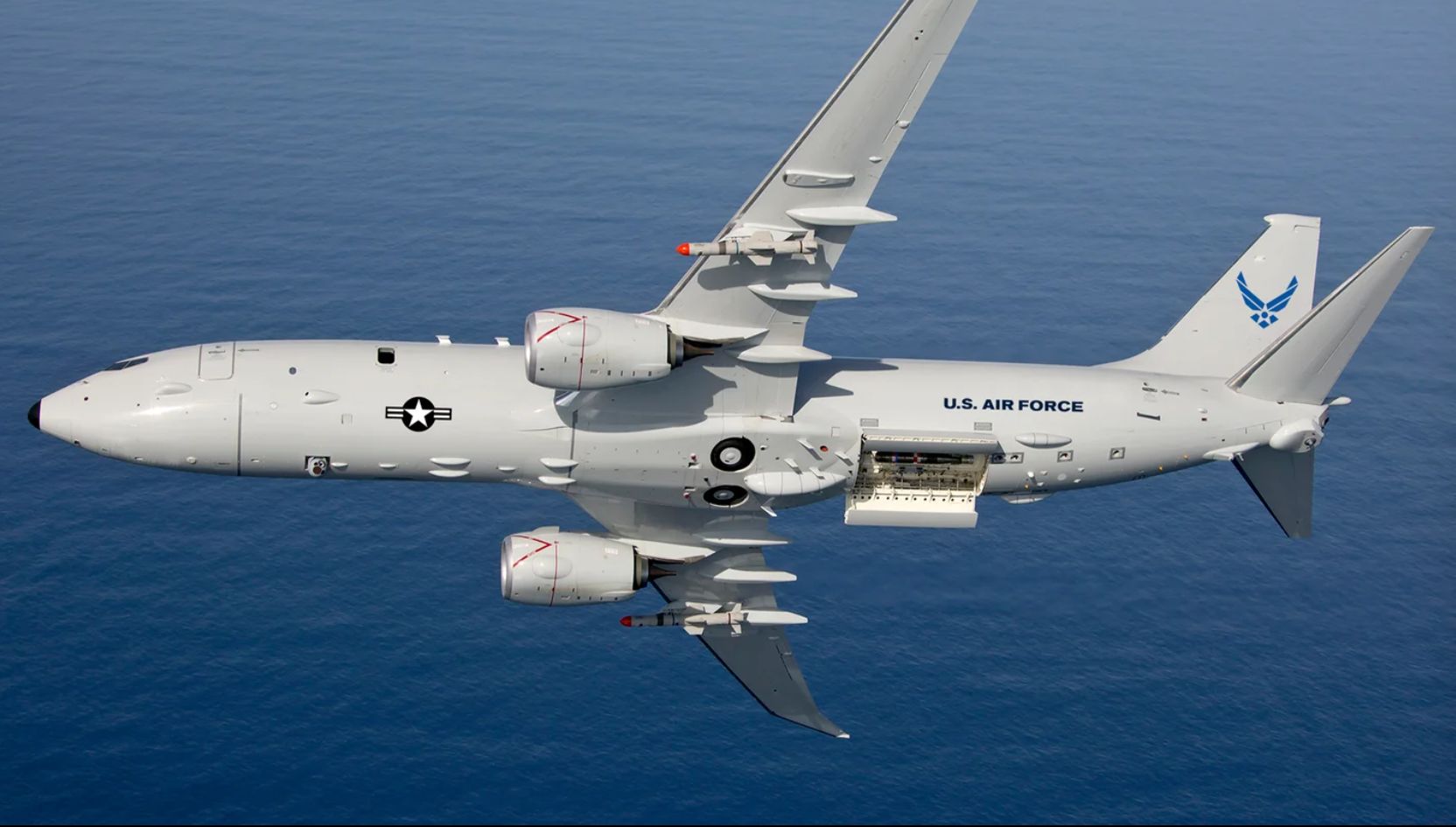The P-8 Poseidon maritime patrol plane is quickly gaining popularity in the Indo-Pacific region, with an increasing number of countries acquiring the aircraft to monitor maritime threats. After India and Australia, South Korea has now deployed the “submarine killer” Poseidon.
The Republic of Korea Navy (RoKN), also known as the South Korean Navy, began operating its fleet of P-8 Poseidon maritime surveillance aircraft on July 3, according to Yonhap News Agency.
South Korea received all six aircraft ordered from Boeing in June 2024. This was followed by a year-long period of flight drills and training for pilots and mechanics.
Now that the preparations are complete, all six aircraft have been deemed operationally fit to participate in maritime patrol, anti-submarine, and anti-surface ship missions.
South Korea bought the aircraft to replace its aging fleet of P-3 patrol aircraft amid rising security threats from North Korea. The P-8A offers superior performance, boasting a higher maximum speed and an extended operational range, as compared to the P-3.
In general, the P-8A aircraft are considered the world’s most advanced “submarine hunters,” capable of performing critical missions such as anti-submarine warfare, anti-surface warfare, and maritime reconnaissance.
At the time of welcoming the aircraft into the country last year, former South Korean Defense Minister Shin Won-sik emphasized, “The P-8A Poseidon will turn the enemy’s submarine into a fish in a fishbowl. The sea will become a hell for enemy submarines.”

South Korea will use the aircraft to keep an eye on both the primary threat, North Korea, and the secondary threat, China.
Other countries, such as India, Australia, and New Zealand, have acquired the aircraft with a special focus on monitoring the rising military activity of the People’s Republic of China (PRC) in the region.
China views the aircraft as a key threat to its submarine operations. Last year, it accused the US of deploying a submarine detector via a P-8A Poseidon in the disputed South China Sea, underscoring the aircraft’s strategic significance in regional maritime security.
The US and Australia have irked China in the past by deploying their Poseidons over territories that are claimed by Beijing, such as the South China Sea and the Taiwan Strait.
Chinese fighter jets have conducted dangerous interceptions of the P-8A maritime patrol aircraft on multiple occasions, as previously reported by the EurAsian Times. In a separate incident in 2023, China dispatched 26 combat aircraft in response to a flight by the US Navy P-8A Poseidon over the Taiwan Strait.
India, too, has deployed the aircraft to keep a vigil on Chinese activities. In addition to its core maritime role, the P-8I has been utilized for Intelligence, Surveillance, and Reconnaissance (ISR) missions on land, most notably during the 2020 Galwan Valley conflict and the 2017 Doklam standoff in the Himalayas, to monitor China.
The aircraft reportedly provided real-time imagery and data on Chinese troop movements along the Line of Actual Control (LAC).
Not just that, the P-8 operators in the Indo-Pacific have also been collaborating, in a signal that they can join forces to enhance each other’s power in times of contingency.
The Royal Australian Air Force (RAAF) P-8 maritime patrol aircraft arrived in India in July 2023 to conduct anti-submarine warfare operations and monitor the Eastern Indian Ocean alongside its Indian counterpart, the P-8Is, with a strategic focus on China.
Discussing this endeavor, retired naval aviator and Vice Admiral Shekhar Sinha highlighted, “In addition to an intelligence-sharing agreement, it allows two aircraft to exchange the positions of vessels in their areas of operation and feed into a larger maritime domain awareness (MDA) network. Due to interoperability, it becomes easier to conduct reconnaissance in a much larger area, even without each aircraft having to operate in two different areas. It gives the force commanders a much larger picture in the MDA.”
The P-8’s widespread use would foster interoperability among QUAD and AUKUS (US, UK, Australia) nations, as well as other operators such as South Korea and New Zealand. This would enable them to create a networked defense system that shares real-time ISR data, which China would struggle to counter due to its limited alliances.
The P-8 Poseidon That Rattles China
Boeing Defense, Space & Security developed and produced the P-8 Poseidon, which is derived from the civilian Boeing 737-800 airliner.
The Boeing P-8 is a versatile maritime patrol aircraft that excels in anti-submarine warfare, anti-surface warfare, intelligence, surveillance, and reconnaissance, as well as search and rescue missions. The P-8I can also be used for coastal patrolling.
It has a maximum range of about 7,500 kilometres and an endurance of 10 hours, allowing the aircraft to conduct long-range patrols over regions such as the Indian Ocean or the South China Sea.
The aircraft has been equipped with modern surveillance and reconnaissance equipment, such as a long-range X-band radar that can identify maritime objects hundreds of kilometers away. It also features sophisticated electronic warfare systems and high-resolution digital electro-optical (EO) and infrared (IR) sensors.
Additionally, the aircraft features the AN/APY-10 multi-mode radar, which incorporates synthetic aperture radar (SAR) and inverse SAR (ISAR) capabilities for detecting submarines, surface vessels, and land targets in all weather conditions. It features secure data links for real-time coordination with ships, aircraft, and ground forces.

More importantly, though, the aircraft can detect submerged submarines by identifying magnetic disturbances. This is critical for tracking China’s growing submarine fleet, and in the case of the RoKN, the P-8A can cover vast areas, such as the Sea of Japan, where North Korea’s submarines operate, and respond swiftly to subsurface threats.
The aircraft can also carry over 120 sonobuoys to detect and track enemy submarine activity.
In terms of weaponry, the P-8A is equipped with air-to-surface missiles designed to precisely target maritime threats, as well as torpedoes for anti-submarine operations.
With its High-Altitude Anti-Submarine Warfare Weapon Capability (HAAWC), the P-8A can engage submarines quickly and accurately without being exposed to low altitudes by deploying MK-54 torpedoes as glide bombs from as high as 30,000 feet.
South Korea’s monitoring of possible submarine-launched ballistic missile (SLBM) launches and Chinese naval movements in the larger Indo-Pacific is strengthened by the P-8A’s capability to observe vast ocean stretches. This is vital for securing sea lines of communication (SLOCs), which are critical to South Korea’s trade-dependent economy.
Operating the same P-8A platform as the US, Australia, and New Zealand would enhance South Korea’s integration into joint operations, particularly with the US Navy. The Link-16 data links, combined with wideband satellite communications, would enable seamless data sharing, thereby improving coordinated responses to regional threats.
As for others, the aircraft can be deployed to monitor contested regions, as well as vital choke points, such as the Strait of Malacca, to keep a close eye on Chinese maritime movements.
The P-8A, engineered for rigorous maritime environments, is designed to endure 25 years or 25,000 flight hours in harsh conditions, including operations in icing environments. It also has an open architecture that allows upgrades for new sensors, weapons, or mission systems to counter evolving threats.
- Contact the author at sakshi.tiwari9555 (at) gmail.com
- Follow EurAsian Times on Google News




